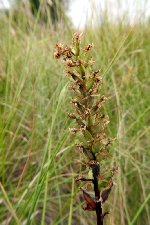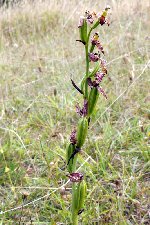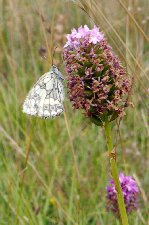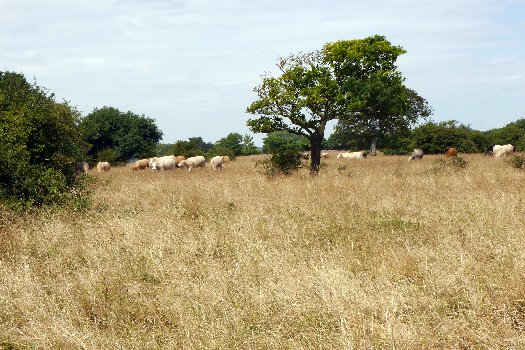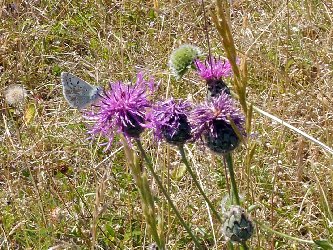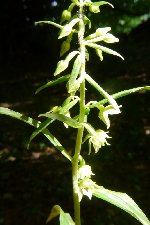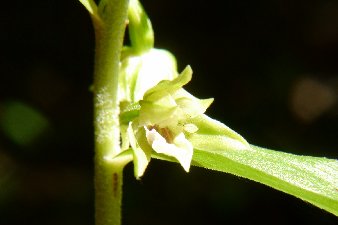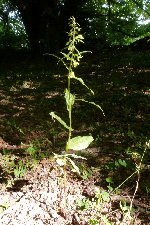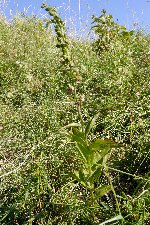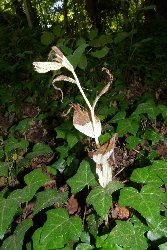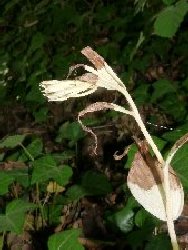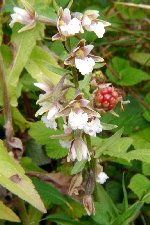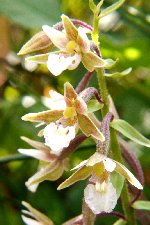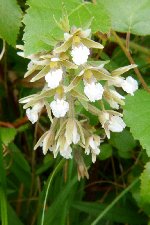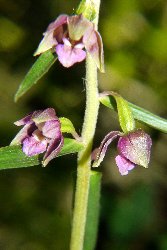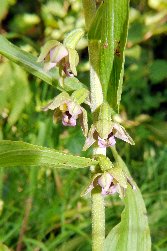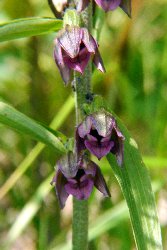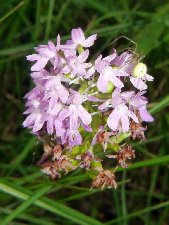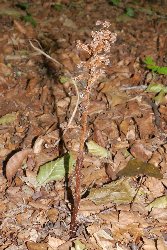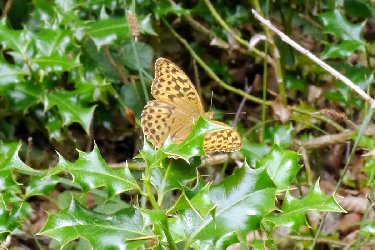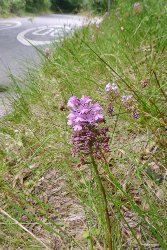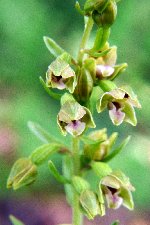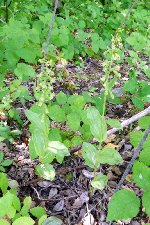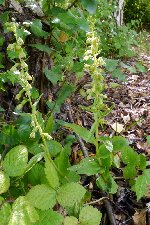|
|
|||||||||||||||||
|
|
|||||||||||||||||
 |
|
A trip down to Gloucestershire should be good for orchids one would think. But not only has there been a number of hot dry weeks, but I think I have misjudged the timing as well. Too late for most genuses, and too early for the Epipactis. Lesson learned. Selsey Common, 10th July 2018 (SO 83095 02824) Nearly all the earlier flowering orchids have gone over or been frazzled by the heat. I can see the ex-flower spikes of Common Spotted Orchids and Bee Orchids, while some Pyramidal Orchids still have a bit of colour to them. Actually, there would have been quite a great display perhaps three weeks earlier. Nice to see Marbled Whites and Adonis Blues on the wing though. Rodborough Common (SO 85123 03610) and Minchinhampton Common 10th July 2016 (SO 85716 01254) An almost identical situation here too, only perhaps worse. I will entertain you with a photo of the cattle that roam Rodborough Common, rather than more burnt offerings. Perhaps a return late June in another year may be possible; these commons do have a good reputation, and there are possibilities of interesting hybrids, if only one can find them.
Sheepscoombe Common, 10th July 2018 (SO 89220 10599) See above, but with added remains of Fragrant Orchids. It would have been nice for the hybrid between those and Common Spotted Orchid to have survived the weather. There are more butterflies here including Dark Green Fritillaries and more Adonis Blues.
A walk through Lord's & Lady's Woods next door to the common was cooling but orchid-free. Buckle Woods, Birdlip 10th July 2018 (SO 91736 13289) Here perhaps we should have a bit more luck; and we do. The Narrow-lipped Helleborines at the southern end of the wood are just coming into flower. A shame about the aphids though. I think I may have been the first to post a picture of one of these on social media this year! But apart from that, nothing left to say. Barrow Wake 10th July 2018 (SO 93109 15355) Treading old ground yet again, and only to use a bit of time and perhaps see the Musk Orchids. We achieve the first of those goals, but where are the Musks? We have been here before and seen nothing, so perhaps a repeat of that. The Broad-leaved Helleborines behind the car parking area are just coming into flower.
Leckhampton 10th July 2018 (SO 94625 17637) I had heard that the apigmentous Broad-leaved Helleborine had come up again, making it at least four years in a row. It clearly has a moderately effective mechanism for robbing its associated soil mycorrhiza of nutrients. It is not looking that good though, with the outer half of each leaf brown and dry. On a positive note though, it looks as if it may flower should there be some rain coming. All the other BLH here are still in bud, including the Var. viridis, with perhaps a week to go before they flower. Dry Sandford Pit 11th July 2018 (SU 46674 99705) This is an old sandstone quarry with a fen environment in the middle. There are still very wet areas despite the lack of rain, and quite possibly it may have been harder to get to the Marsh Helleborines here if the water table been higher. There are some Var. leucantha too. Odd that an uncommon variety is more boring than the bog standard flower. No sign of Marsh Fragrant Orchids though. These should have been around somewhere. Parsonage Moor reserve nearby (SU 46112 99767) is said to include the Narrow-leaved Marsh Orchid. However a couple of years ago, based on molecular data, it was declared that all plants designated as such south of a line from the Humber to the Severn were in fact Southern Marsh Orchids. The good news was that they are a new indigenous sub-species - schoenophila! This is one I want to see. However I know it is going to be too late in the year, but cannot leave the area without trying. A boardwalk takes you along the edge and out into the fen here. Or at least what was a fen. It is totally and utterly dry. You can walk across it going crunch, crunch, crunch. Here and there are marker sticks with blue tags, but nothing orchidy can be seen growing by them. The only thing of any note was a couple of Common Spotted Orchids. Rudge Hill 12th July 2018 (SO 84989 09081) Parking in the layby we immediately find a number of Broad-leaved Helleborines some starting to flower, others sadly withering. More are seen following the path alongside the woodland - nice bright purple flowered, along with Pyramidal Orchids going over. But out on the common it is the same story; just dried, finished Common Spotted and the ilk. I know Violet Helleborine grow here, but I think you have to know where to look. They wouldn't be in flower yet, and the spikes would be bent over; definitely not going to be obvious yet. Buckholt Woods 12th July 2018 (SO 89357 13076) Okay, we have been here before, but in addition to the Bird's-nest Orchids there should be some Green-flowered and Broad-leaved Helleborines. The BNOs are all dried and brittle, and despite an hour walking old and new trails, covering several different habitats, we see no more orchids - oh, apart from the large group of Pyramidal Orchids at the car park entrance. How have we missed those before? We are here to see this "Indian Palace" lying in the heart of the Cotswolds, but the gardens do provide evidence of both Common Spotted and Pyramidal Orchids. Along the drive to the house I could have sworn I saw Broad-leaved Helleborines under the trees, but couldn't stop due to a train of cars behind. Unfortunately we were ushered out a different way. P.S. I didn't bother with a trip up Painswick Hill this year, thinking that the drought conditions would be repeated, and we had been up enough hills already. A shame because it was reported that 90+ Broad-leaved Helleborines were nicely in flower on the golf course bit just a couple of days after our return. A second and probably last visit to this small nature reserve (and will explain why soon). Last year we were too late for the Dune Helleborines, this year it is too hot and dry for both them and the Broad-leaved Helleborines. The Dune Helleborines in the open have all `had it' for the year, and rather oddly, others are flowering where BLH grew last year - at the back and under the bushes. Were these mis-identified? I doubt it. It was by here that as a young teenager I had my first reaction to a gnat bite. Now I am bitten by some unknown insect and next morning my entire inside forearm is red, swollen and rather painful. Clearly I am hypersensitive to a particular species living here, so will keep away unless I can borrow an apiarist's suit for protection! |
|
|
||||||||||||||
